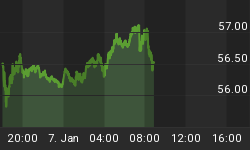During the past 12 years silver prices have bottomed, rallied sharply, collapsed, and then languished for a year or more. The patterns are not identical, but there are obvious similarities as shown in the following chart. (Note that it is a weekly line chart, from close to close, log scale, with high and low bars not shown. For example, silver might have bottomed on a Wednesday but only the Friday close is plotted.)
Crash Lows: 11/23/2001, 5/7/2004, 6/16/2006, 10/24/2008, 7/5/2013
Launch Lows: 3/21/2002, 8/26/2005, 8/17/2007, 2/5/2010
Breakouts: 5/2/2003, 10/14/2005, 9/21/2007, 4/16/2010
Highs: 4/2/2004, 5/12/2006, 3/14/2008, 4/29/2011
Since the bottom in November 2001 at a weekly close of $4.03, silver has had four launch lows, breakouts, highs, and crash lows. We await the next launch low, subsequent breakout and a new high in the 5th cycle.
Based on the chart, the high in April 2011 was quite high, the subsequent low in July 2013 was an unusually deep correction and substantially delayed compared to previous cycles. I interpret this extended and deep low as a reaction to the huge rally from about $18 in mid-2010 to nearly $50 in April 2011. High Frequency Trading and massive intervention since the crash of 2008 have pushed the prices for gold and silver much higher and much lower than in previous cycles. They have also made the timing projections less reliable, but certain parallels are clear.
The last four cycles from crash low to high have taken from 1.75 to 2.5 years. That suggests an upcoming high sometime in 2015 - 2016. The last four cycles from crash low to launch low have taken 1.0 to 1.3 years. That suggests an upcoming launch low sometime in 2014. Following the launch lows, highs occurred approximately 0.5 to 1.2 years later. That suggests a high sometime in 2015 or 2016. We will wait and see.
But what if the market has fundamentally changed and the April 2011 high near $50 was a long term top that might not be repeated for another decade or so? I doubt it, but reputable forecasters such as Harry Dent believe that gold will drop to about $750 during the long term commodity bear market that he sees this decade. To address the possibility, consider this table:
| Year 2001 | Year 2013 | |
| U.S. official debt | $5,800 Billion | $16,700 Billion |
| U.S. unfunded liabilities | perhaps $40,000 Billion | perhaps $200,000 Billion |
| Gold price | around $275 | around $1,300 |
| Silver price | $4-$5 | around $22 |
| Dow Industrial Average | 10,000 - 11,000 | 13,000 - 15,000 |
| U.S. dollar status | undisputed leader | shaky and increasingly replaced for trading |
| Reputation of Congress | so-so | corrupt and unpopular |
| War expenses | some | many wars, all expensive |
| Quantitative Easing | not needed | utterly necessary |
| U.S. national debt | slowly increasing | rapidly increasing |
| U.S. economy | strong and optimistic | five years of weakness and recession |
We could add many more rows to this table, but they would tell essentially the same story: increasing debt, increasing money supply, weaker economy, and QE-forever that is necessary to enable government deficit spending. We don't foresee declining gold and silver prices unless we fall into a deflationary collapse. The Fed has made it clear - no deflation! The US congress and the President have made it clear; they want to spend, spend, spend! Accidents do happen, but "Don't Fight The Fed." Expect money printing, inflation, increased debt, and higher prices.
Conclusions:
Since 2001 the silver and gold markets have gone up substantially as a reaction to the 20 year precious metals bear market from 1980 - 2000, massive increases in military spending, weakening global economies that REQUIRE Quantitative Easing to avoid deflation, the rise of competing currencies that weaken the dollar's trading status, excessive debts in Europe, Japan, the United Kingdom, and the United States, and so much more.
We should also learn from the past 12 years of silver cycles: a high, crash low, launch low, and breakout, will repeat until the global monetary system fundamentally changes from unbacked debt based paper money and returns to some form of a gold backed currency, whether it is the dollar, an IMF currency, or another hybrid currency.
Unless the world jumps off a cliff into a deflationary collapse that fundamentally changes our world, we should expect more government expenses, more QE, increasing debt, higher consumer prices, more expensive wars, and higher precious metals prices. We should expect an upcoming launch low, breakout, and high in the silver (and gold) market. The "gravy train" of government expenditures must continue rolling - powerful vested interests are everywhere and cannot be ignored - and few, if any, government programs will be reduced unless such reductions are forced by absolute necessity.
If this view is more or less accurate, precious metals, and silver in particular, will perform better than bonds, stocks, and most other investments available to those outside the upper 1% - the financial and political elite.
Additional Reading:
The Smell of Collapse Is In The Air
Gold, Silver, and the Sins of the Past

















